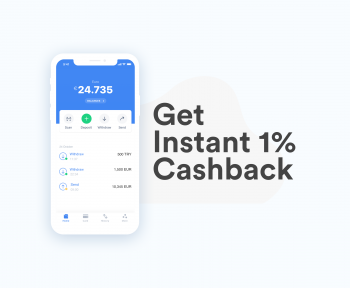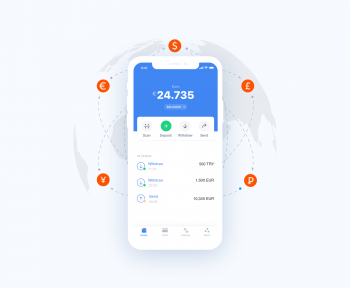Our patterns to pay have evolved over the years from seashells to shekels and then banknotes. In order to find easy ways to maintain the trade, many items have penetrated the system. The history of payment has always been parallel to human history. Modern banking approaches date back to the 15th century in Renaissance Italy, notably Florence, Venice, and Genoa. The notion extended in a blink of an eye to other regions of Europe due to its seamless modification in the rising trading perspective.
Today, we have a whole new route to manage our payments. The tiring waiting days in a suffocating bank branch are over. Since none of us has time for this anymore, our requests assembled a revolutionary touch to the system. A touch soothing our lives tremendously. A touch that you can monitor all your transaction history with a few clicks instead of a perplexing, time-consuming, and exhausting customer support droll. Welcome to a new era, a financial world driven by digital wallets! But what exactly is a digital wallet, and how does a digital wallet work?
What is a Digital Wallet?
In a nutshell, we can define digital wallets as financial services or applications you can operate for online transactions. Also known as an electronic wallet, these accounts will deliver you swift online money transfers. Your password and payment information is securely stored in them. Plus, they provide the unique advantage of not carrying your physical wallet everywhere. Because thanks to the cutting-edge technologies they are equipped with, digital wallets take care of your transactions with some taps of your mobile device.
Supplying a practical means to pay in-person, online, and within apps, digital wallets can be issued by standard banks, whereas they can also come as autonomous from the traditional banking system. The registration process is easy when considering the hardship of opening a bank account. Here are the steps to follow to register into a digital wallet:
- Typically, you need to download the mobile app according to your operating system.
- Click “Create an Account” and insert your personal details, such as your full name, date of birth, email address, phone number, and residential address,
- Please be sure that all the registered details are honest and accurate because you will need to send some documents to confirm them all afterward,
- Once your account is created, you will be asked to verify your identity. It may sound complicated, but no worries. You can send a well-taken photo of your valid ID or passport. When you are approved, the provider will notify you.
- To load your digital wallet, you can use the listed deposit alternatives. You can also select to unite your bank account directly in some cases.
How Does It Work?
Have you ever wondered what happens when you tap your mobile, card, or wearable on a payment terminal? To securely intercommunicate payment information from your mobile device to the Point of Sale terminal, to receive the data and connect via these signals, digital wallets utilise the wireless capabilities of a mobile device, such as Bluetooth, Wifi, and magnetic waves. This advanced way of connecting makes digital wallet transactions possible, speedy and protected. There is more behind them, QR codes, NFC and MST. At this point, we will briefly clarify these stunning technologies, so our readers can understand the interesting formula.
- QR Codes (Quick Response Codes): We can describe them as matrix barcodes keeping data. To make a transaction via QR code, you must scan it by the camera on your device or the scanning feature of the wallet.
- NFC (Near Field Communication): This fantastic technology connects two smart devices and uses electromagnetic signals to transfer data between them. In order to hold the connection, two devices must be within around 4 centimeters of one another. According to the latest news, NFC payments have increased by 30% over the last two years. Probably, many users prefer not to touch POS machines after the catastrophic COVID-19 pandemic.
- MST (Magnetic Secure Transmission): The term “MST” describes a type of mobile payment technology in which devices like smartphones generate a signal that resembles the magnetic stripe on a typical credit or debit card.
Indeed, interoperability is the main difference between NFC and MST technologies. For Near-Field Communication payments, both the shopper’s device and the merchant terminal must support NFC tech. However, MST features a grander range of terminal types in contrast to the NFC payment protocol.
All in all, after assembling an account and verifying that you are the person you claim to be, digital wallets are beneficial ways to shop online or in-store. Most of the popular digital wallets are also placed in gateways of online shopping platforms. So it can be even swifter to purchase from these venues when you connect your account.
Digital wallets are also pretty steadfast in safeguarding your personal and financial data. Every transaction is fully encrypted to scramble up all the data. Therefore, if a leakage or fraudulent activity emerges, it is impossible to read for third parties. Furthermore, thinking that NFC, MST, and QR code technologies require your mobile devices and, in most cases, your fingerprint scan, it wouldn’t be unjust to accept them as secure.
Are you seeking a dependable and straightforward digital wallet to manage your international money transfers, scheduled payments, and online purchases? Our seamless service, Jeton Wallet, can be the one meeting your high standards. We are a proficient team with long experience in the financial market and comprehend clients’ expectations.
Jeton Wallet is available in more than 50 fiat and cryptocurrencies in over 100 countries and keeps on extending its services worldwide. To meet our affordable money transfers and other benefits, you can stop by jeton.com any time. We assure you an ultimate and smooth online payment venture as you have never experienced before!



